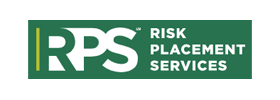The Flood Map Service Center by FEMA displays information like flood zones, floodways, and the risk rating of your home. There’s also information on levees, coastal barriers, the base flood line, and topographical and infrastructure data. For advice in Tulsa, OK, you can contact Greater Tulsa Insurance Inc.
What to Know About High-Risk Flooding Areas
Flooding is a problem in all regions, although some are more vulnerable than others. You may face increased insurance rates as well as probable damage to your house depending on the amount of hazard your property faces—low, moderate, or high risk.
The maps provide a risk assessment based on previous flood occurrences and patterns. Most properties in high-risk flood zones are located near water. Non-flood zones account for more than 20% of flood-related property insurance claims, so no one should believe they’re secure. Flooding may become more prevalent as a result of climate change.
According to Popular Science, nearly 15 million American properties are in significant danger of flooding in 30 years. More than three million are virtually guaranteed to be submerged during that period. There are various methods for preventing flooding in your home. One of them is to employ a flood sensor.
These can detect leaks from equipment such as your water heater and washing machine and weather-related basement leaks. You’ll be notified of any unwanted water that appears in your home. Private flood insurance plans are available, but you can also get government-sponsored coverage via the National Flood Insurance Program (NFIP).
Contact Us Today
Floodplains and flood zone classifications can alter over time due to new buildings and changes in terrain. Make a strategy to examine the flood zone classification of your property every five years or so.
Keeping track of your flood zone designation helps you prepare for a potential flood and assures you have the correct type and amount of flood insurance at all times. For help, call Greater Tulsa Insurance Inc. in Tulsa, OK.

















